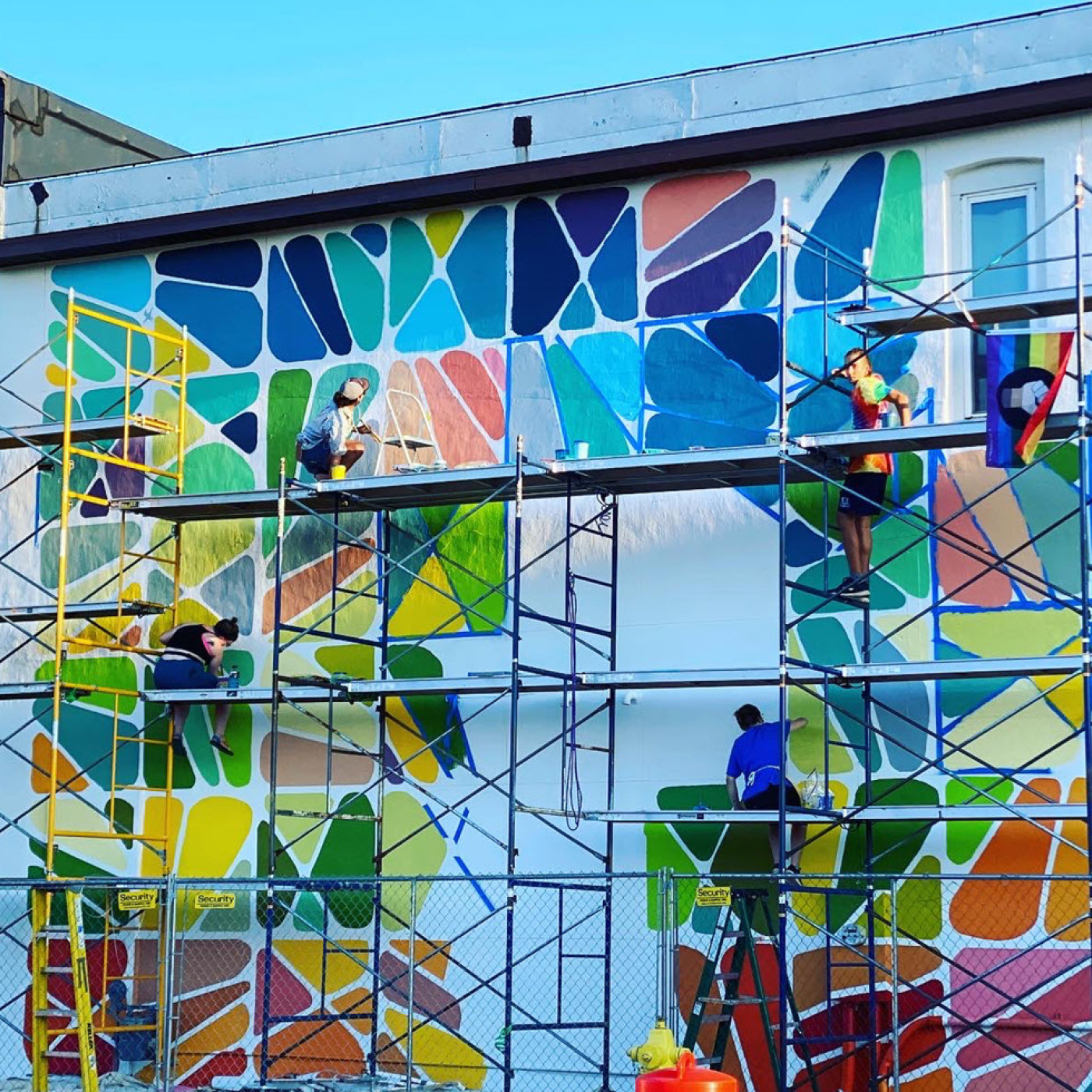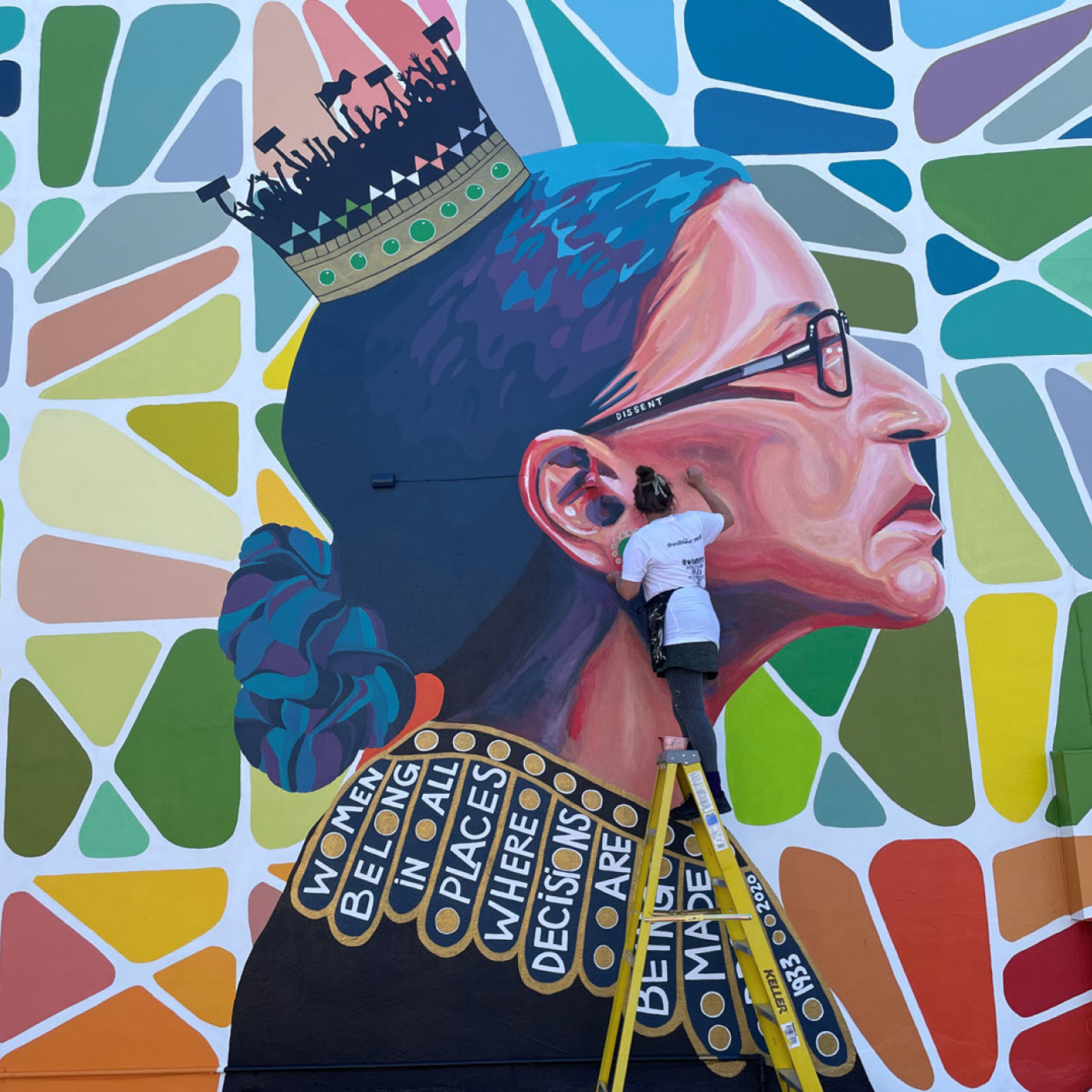Buzz in Art Studios A Space Where Art Is Created and Taught
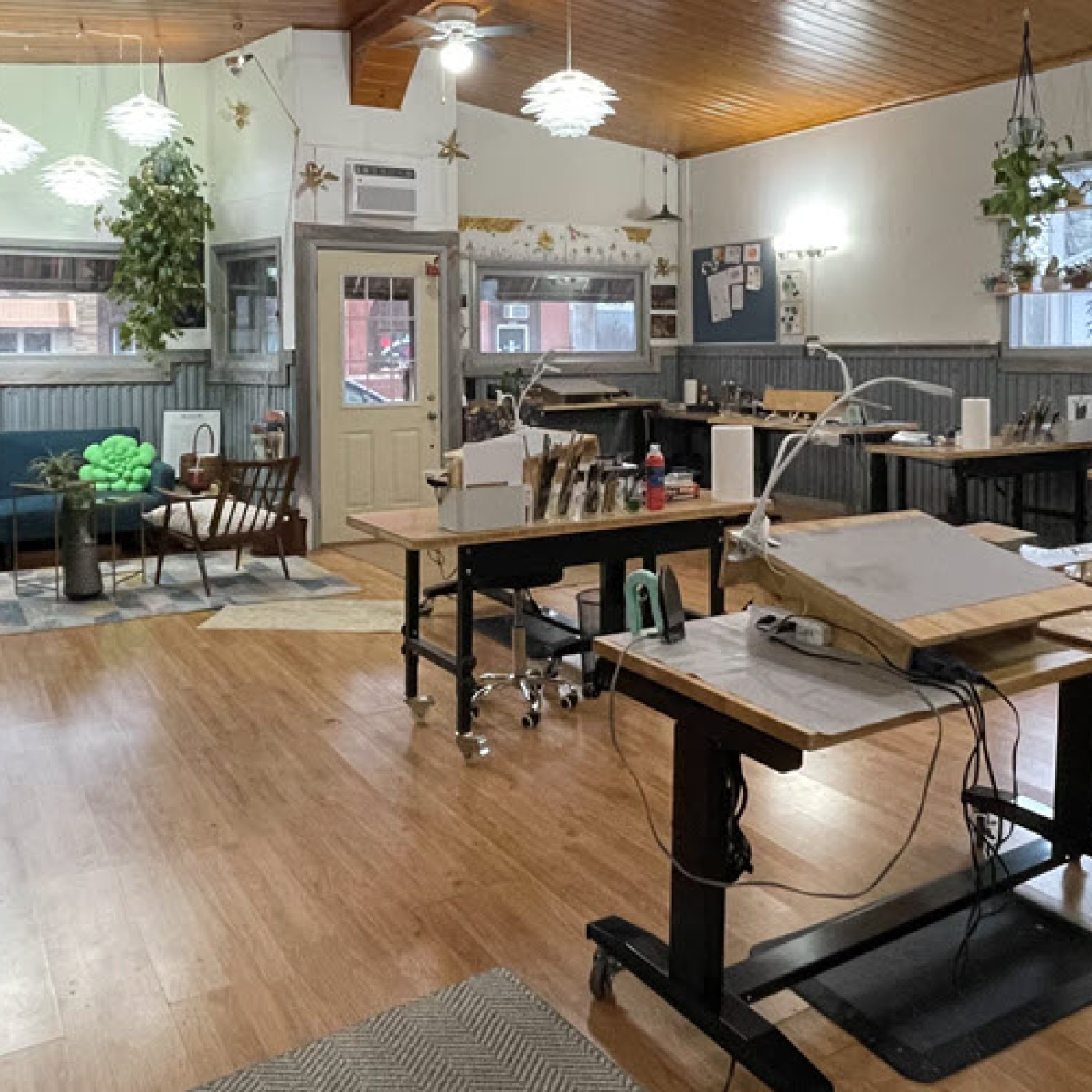
Jessie Fritsch paints because she grew up surrounded by a creative, artsy family who supported her artistic talent and her ambition.
From the time Fritsch was in elementary school, she knew what career path she planned to pursue. “In grade school, when asked what I wanted to be when I grew up, I always said, ‘An art teacher.’ I decided to go to college to become an art teacher,” she said.
However, the way she would eventually teach morphed into something much different than what she imagined as a young girl. Fritsch began teaching encaustic workshops in her personal studio back in 2018.
Two years ago, she opened Buzz in Art Studios. The teaching studio space is in the unincorporated community of Arnott, in central Wisconsin.
“I saw the old building online. The building used to be Barney’s Tavern back in the 1930s. It has the original bar back. I fell in love with the space,” Fritsch said. “The space is small enough to handle the expenses of leasing a space but has character to add to the workshop experience.”
She loved the location because of the area’s history. “The town is surrounded by agriculture, and I enjoy driving out to the teaching studio — watching the fields get planted, grow, and harvest,” Fritsch said. “My landlords are the owners of the Arnott Feed Mill.”
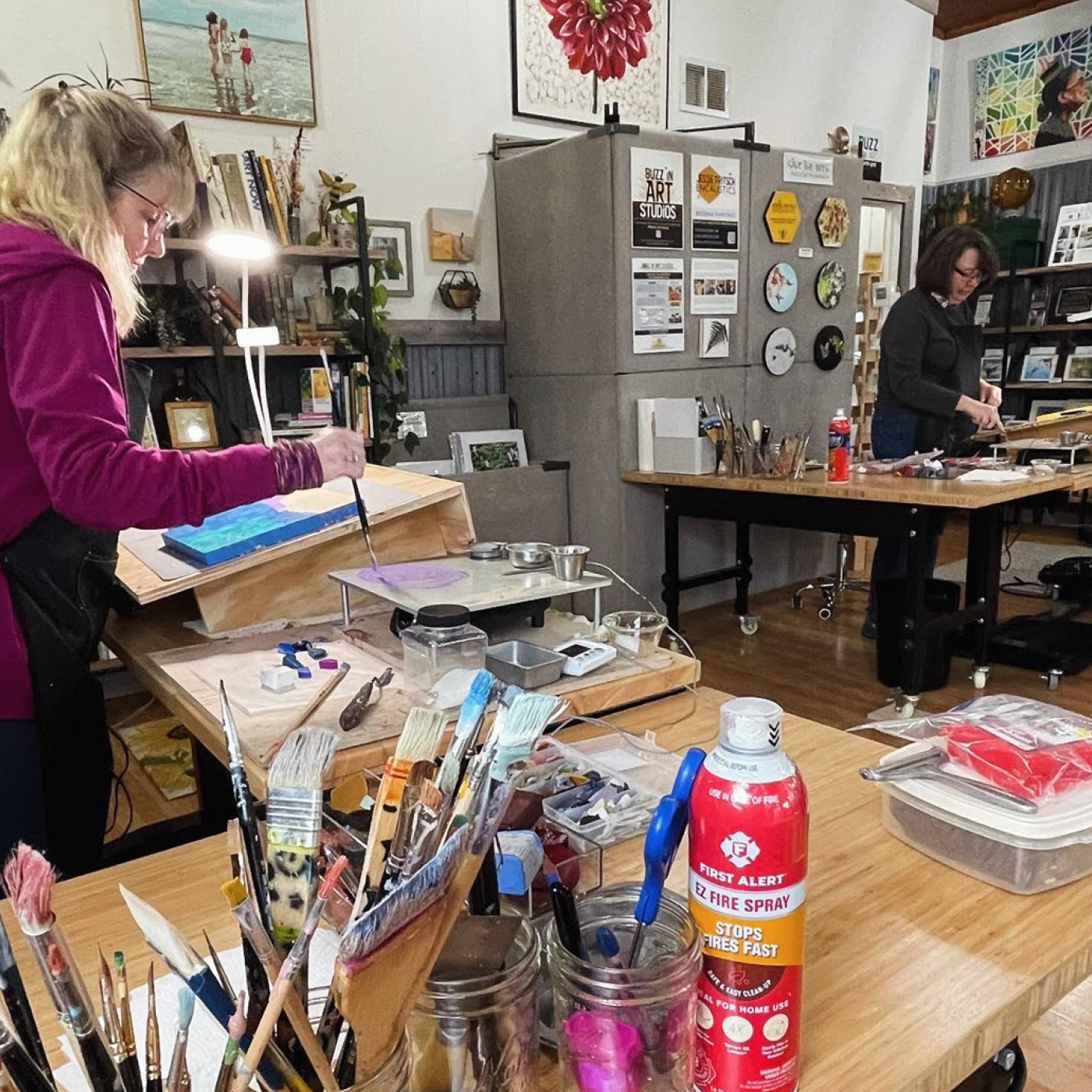
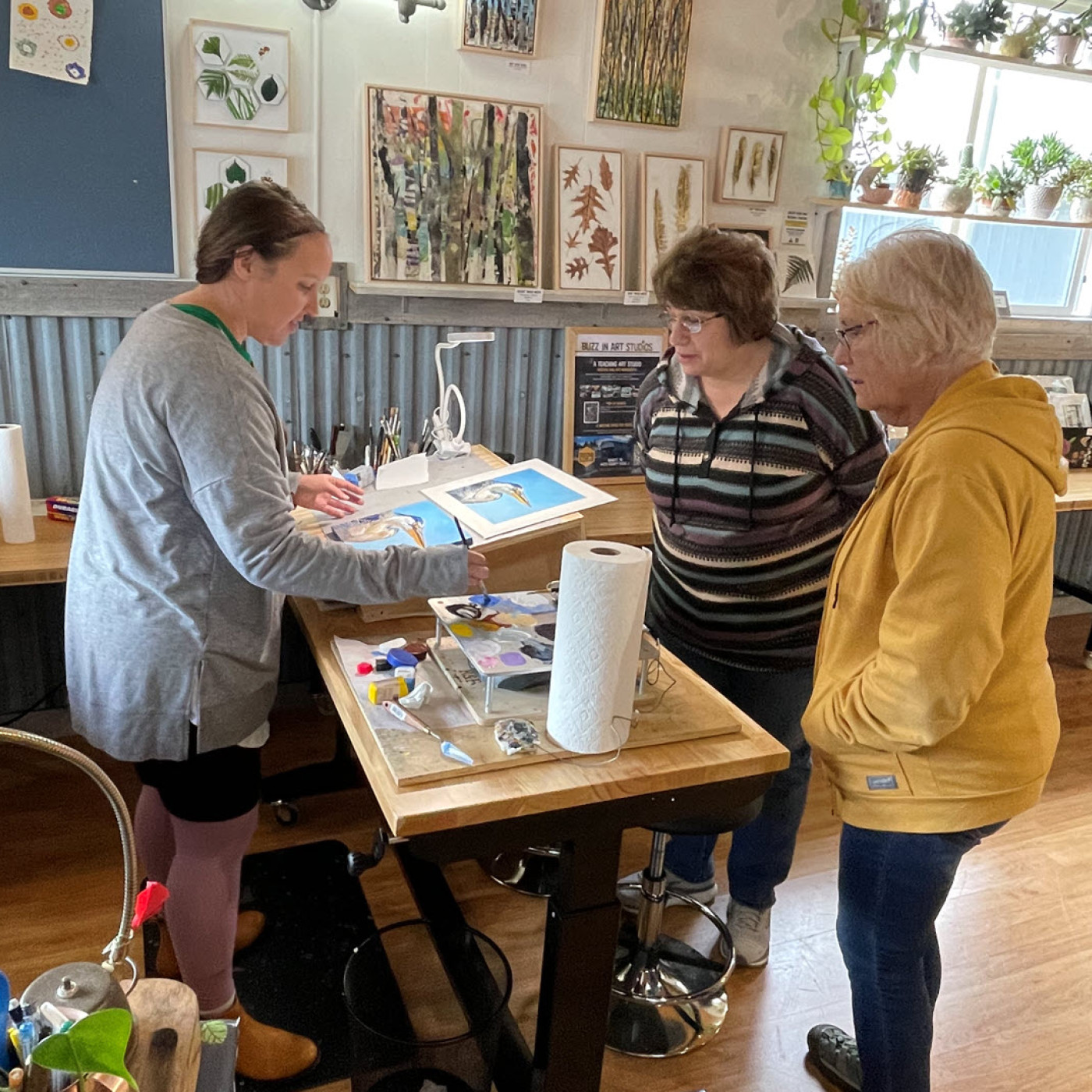
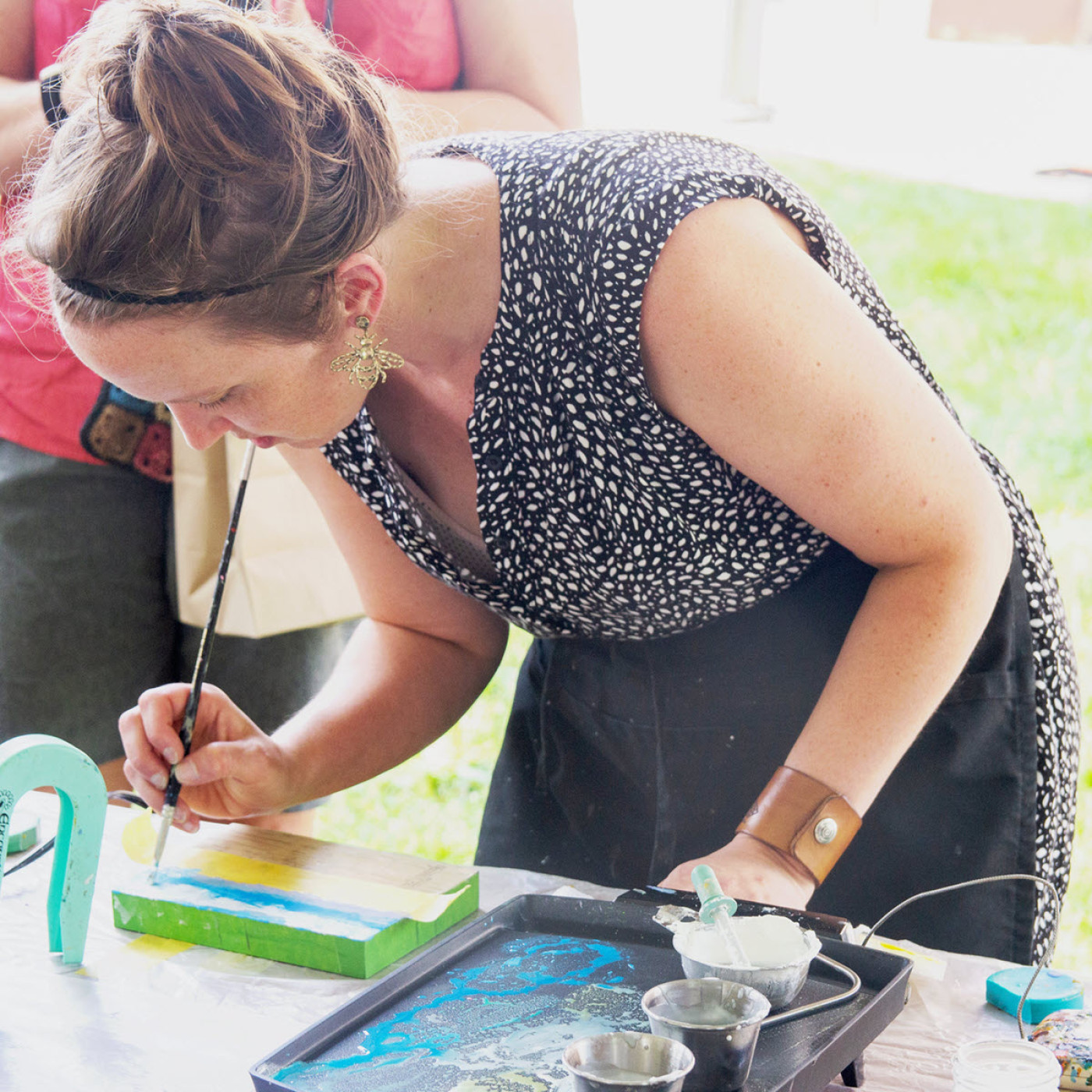
Her Artistic Journey
For Fritsch, opening a teaching studio was an idea that evolved over time. “I went from wanting to be an art teacher at the schools, to wanting to be a professor at a university, to realizing that I can be my own boss and teach what I want to teach and not have to follow state guidelines,” she said. “My new goal is to provide a teaching space for other artists. I want to see Buzz in Art Studios become a hub for fine art workshops.”
Fritsch’s study of art began at a community college. “It was there that I met my mentor and painting professor Judith Waller. I was her assistant, and I stumbled across the book about ancient funeral portraits that were painted with beeswax titled The Mysterious Fayum Portraits: Faces from Ancient Egypt by Euphrosyne Doxiadis in her library,” Fritsch said. “I asked her about the book, and she told me about encaustic painting. She had used the medium before and offered to bring in her supplies and equipment to show me the process.”
The first time Fritsch painted with encaustics, she was in the grass outside that community college. “We were not allowed to paint inside the university studio because we needed a stronger ventilation system,” she said. “The first time I tried encaustic, I was fascinated but intimidated by the process. I decided to curb my interest in encaustic for a bit and to focus on oil painting, but my curiosity for the ancient medium stayed with me.”
After two years at the community college, she transferred to a state university — ready to start her art education program. “I was discouraged once I started the program. I didn’t find a mentor, wasn’t inspired by the art department, and decided that I didn’t want to teach in the public schools,” Fritsch said.
She left that state university and transferred to a different one in Wisconsin to pursue a Bachelor of Fine Arts degree, with the goal of becoming a college professor. While at that next university, she became frustrated with oil paints.
“I didn’t have the patience to let my layers dry. I was lazy in covering my paints and cleaning my brushes, so I would waste paint and ruin brushes,” Fritsch said. “I didn’t like using solvents and mineral spirits. It was then I began thinking about how the encaustic process would be a solution to many of these issues I had with oil painting.”
She learned that the university offered research grants for programs not taught there. Fritsch authored a research grant and, in 2004, received one from the university to teach herself how to paint with encaustic — molten pigmented beeswax.
That same year, Fritsch received the Stevens Point Festival of the Arts Scholarship for her encaustic work. In 2006, she graduated with a Bachelor of Fine Arts in studio art, with a painting emphasis.
Fritsch started to primarily use encaustics because she was captivated by its ancient history and challenged by its process of heating and cooling, which captures the dynamic of chaos and demands control unlike that of any other painting medium. “The process of encaustic demands a confident hand, as well as a hand that can allow the spontaneity of the flow of the wax,” she said. “This balance of discipline and disconformities is reflected in my work as well as my life.”
A fun side story is the fact that the paints and R&F hot plate/palette she first tried encaustics with are in her art studio. “When Judith Waller retired a couple of years ago, she gave me all her encaustic supplies,” Fritsch said. “The palette I currently use to paint all my paintings is the same palette I first used over 24 years ago.”
